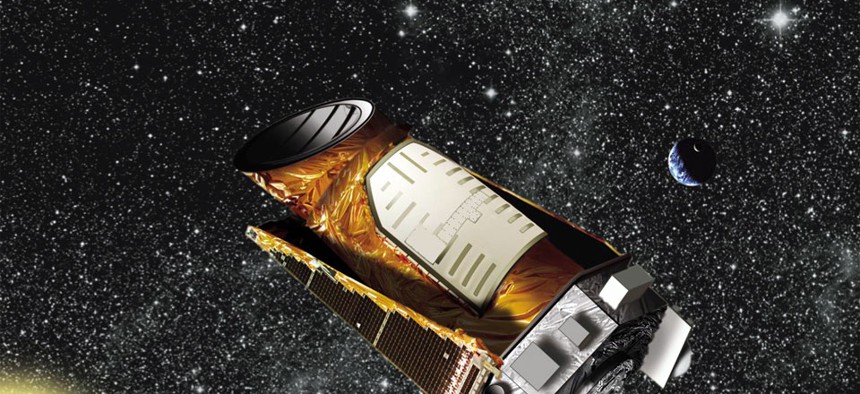NASA's Planet-Hunting Telescope Will Never Hunt Planets Again

This artist's concept shows the Kepler spacecraft. NASA
The space agency has given up on repair attempts to the Kepler Telescope.
On Thursday, NASA announced that they'd given up on repair attempts to the Kepler Space Telescope, after a second navigational wheel critical to the spacecraft's mission (there are four in total) stopped working in May. That officially ends the Kepler's mission to find new, possibly habitable planets around other stars. Instead, NASA's in the middle of collecting ideas for what else they can do with their otherwise perfectly-functional telescope orbiting the sun.
But don't worry: NASA will probably still discover more promising planets. Analysts haven't yet worked through all the data collected by Kepler before it went down for the count. That data has given researchers a lot to work with: they've found 135 potentially habitable exoplanets, and identified over 3,500 candidates. According to William Borucki at NASA’s Ames Research Laboratory, researchers are still pretty pumped about the work ahead of them (via the New York Times):
“The most exciting discoveries are going to come in next few years as we search through this data. In the next few years we’re going to be able to answer the questions that inspired Kepler: are Earthlike planets common or rare in the galaxy?”
NEXT STORY: Google Is Preparing for Screenless Computers





